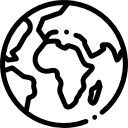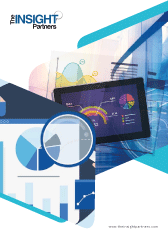$4450
$3560
The Real-Time Location Systems for Healthcare Market size is expected to reach US$ 10.66 billion by 2031 from US$ 3.27 billion in 2024. The market is anticipated to register a CAGR of 18.6% during 2025–2031.
Real-Time Location Systems for Healthcare Market Analysis
The adoption of real-time location systems in healthcare is rising owing to demand for greater visibility of assets, improved patient safety, and enhanced workflow processes. Within healthcare organizations, the RTLS tracks equipment (e.g., surgical tools), staff, and patients, important considerations as healthcare organizations aim to reduce costs and improve patient care. Other factors driving adoption are technological advancement, especially with the rise of IoT, artificial intelligence, and other technologies.
Real-Time Location Systems for Healthcare Market Overview
RTLS includes technologies and systems that enable continuous, automatic tracking of people, assets, and environmental conditions in medical or health-related settings (hospitals, outpatient clinics, laboratories, eldercare facilities, etc.). The market growth is driven by growing demand for efficient patient care, the need to reduce healthcare costs, and the rising focus on patient and staff safety.
Customize Research To Suit Your Requirement
We can optimize and tailor the analysis and scope which is unmet through our standard offerings. This flexibility will help you gain the exact information needed for your business planning and decision making.
Real-Time Location Systems for Healthcare Market: Strategic Insights

Market Size Value in US$ 2.37 billion in 2022 Market Size Value by US$ 9.36 billion by 2030 Growth rate CAGR of 18.7% from 2022 to 2030 Forecast Period 2022-2030 Base Year 2022

Naveen
Have a question?
Naveen will walk you through a 15-minute call to present the report’s content and answer all queries if you have any.
 Speak to Analyst
Real-Time Location Systems for Healthcare Market Drivers and Opportunities
Speak to Analyst
Real-Time Location Systems for Healthcare Market Drivers and Opportunities
Customize Research To Suit Your Requirement
We can optimize and tailor the analysis and scope which is unmet through our standard offerings. This flexibility will help you gain the exact information needed for your business planning and decision making.
Real-Time Location Systems for Healthcare Market: Strategic Insights

| Market Size Value in | US$ 2.37 billion in 2022 |
| Market Size Value by | US$ 9.36 billion by 2030 |
| Growth rate | CAGR of 18.7% from 2022 to 2030 |
| Forecast Period | 2022-2030 |
| Base Year | 2022 |

Naveen
Have a question?
Naveen will walk you through a 15-minute call to present the report’s content and answer all queries if you have any.
 Speak to Analyst
Speak to Analyst
Market Drivers:
Enhancing Patient Safety and Ensuring Regulatory Compliance:
Real-time location systems employ wireless sensors and tracking systems. They allow health care organizations to track the real-time location of patients, staff, and equipment to improve operational efficiency and safety standards. RTLS compliance enables organizations to track the real-time location and status (including darkness) of medical equipment, medications, and personnel.
Increasing Adoption of Smart Hospitals and Digital Healthcare Technologies:
Adopting smart hospitals and digital healthcare technologies transforms patient care, operational efficiency, and asset management in healthcare facilities. Smart hospitals leverage Internet of Things (IoT) technologies to track staff, patients, devices, and equipment in real time, both within and beyond hospital premises.Growing Need for Asset Tracking
Business sectors such as healthcare require visibility of assets. RTLS reduces asset loss, improves asset utilization, and reduces downtime by providing accurate location data.Rising Demand for Workflow Optimization
RTLS assists organizations in optimizing their workflows by tracking the movement of personnel and equipment. Having real-time visibility allows for the elimination of bottlenecks, a reduction in return time, and increased productivity. For organizations improving lean systems, RTLS can be a key component.
Market Opportunities:
Expansion into Infection Control and Contact Tracing:
RTLS improves operational efficiencies and enhances patient safety, but its application in infection prevention may change how we provide healthcare. Hospitals can utilize RTLS technology, combined with infection control measures, to identify potential locations for contamination, identify exposure events, and manage quarantine efforts with remarkable speed.Use in Elderly and Long-Term Care Facilities
The aging population increases the need for safer nursing homes and assisted living environments. RTLS can track patient movement, mitigate falls, and notify staff in real-time, providing valuable solutions for managing elderly care.Increased Focus on Infection Control
Post-pandemic healthcare prioritizes infection control. This technology is used to track interactions and movement in support of contact tracing, cleaning of rooms, and social distancing compliance, making it an emerging model for managing infectious cases in an outbreak.Customizable and Scalable Solutions
RTLS systems are increasingly designed to be modular and more flexible, allowing providers to start small and grow as they become familiar with the technology. This flexibility makes implementation more likely for small hospitals and clinics, expanding the base of potential customers.
Real-Time Location Systems for Healthcare Market Report Segmentation Analysis
The real-time location systems for healthcare market is categorized into distinct segments to understand its structure, growth prospects, and emerging trends. Below is the standard segmentation approach used in industry reports:
By Offering:
Hardware:
The hardware segment comprises fundamental physical elements such as tags, badges, beacons, readers, sensors, and gateways. These elements constitute the infrastructure facilitating real-time asset, staff, and patient tracking inside healthcare facilities.Software and Services:
This segment consists of software platforms to deliver data visualization, analytics, and system integration, as well as services such as installation, consulting, maintenance, and training, with more healthcare facilities embracing RTLS to track assets, employees, and patients in real-time.
By Technology:
RFID:
Radio Frequency Identification (RFID) technology is a cornerstone of RTLS in healthcare, offering accurate and cost-effective tracking of assets, staff, and patients.Wi-Fi:
Wi-Fi RTLS uses wireless infrastructure in healthcare environments to locate and monitor assets, staff, and patients in real-time.Others:
The "Others" segment comprises new and hybrid solutions such as Infrared (IR), Ultrasound, Bluetooth Low Energy (BLE), and Ultra-Wideband (UWB), each with its own advantages based on application and level of precision required..
By Application:
- Inventory/Assets Tracking and Management
- Personnel Location and Monitoring
- Supply Chain Management and Automation
- Others
By Facility Type:
- Hospital and Healthcare
- Facilities Senior Living Facilities
By Geography:
- North America
- Europe
- Asia Pacific
- South & Central America
- Middle East & Africa
Real-Time Location Systems for Healthcare Market Report ScopeReal-Time Location Systems for Healthcare Market Share Analysis by Geography
The real-time location systems for healthcare market in the Asia Pacific is witnessing the fastest growth due to rising healthcare investments, technological advancements, and increasing demand for efficient patient care, asset tracking, and hospital workflow optimization across emerging economies. Emerging markets in South & Central America, the Middle East & Africa have untapped opportunities for real-time location systems for healthcare providers to expand.
The real-time location systems for healthcare market growth differs in each region due to varying healthcare infrastructure, technology adoption, and investment levels. Below is a summary of market share and trends by region:
1. North America
Market Share:
Holds a significant portion of the global marketKey Drivers:
- Advanced healthcare infrastructure
- Advanced healthcare infrastructure in North America supports RTLS adoption by enabling integration with existing digital systems, improving patient care, asset management, and operational efficiency across healthcare facilities.
- High adoption of telehealth and wearable tech
- Strong government and insurance support for digital health.
Trends:
Shift toward value-based care and integrated remote monitoring systems.
2. Europe
Market Share:
Substantial share owing to early, stringent EU regulationsKey Drivers:
- Emphasis on patient safety and hospital efficiency
- The strong focus on patient safety and hospital efficiency drives RTLS adoption, enabling real-time monitoring, reducing errors, enhancing workflow, and ensuring better resource utilization within healthcare facilities.
- Regulatory support for smart healthcare solutions
- An aging population is driving the need for better patient monitoring and asset tracking.
Trends:
Expansion of smart hospitals and integration of RTLS with EHR systems.
3. Asia Pacific
Market Share:
Fastest-growing region with dominant market shareKey Drivers:
- Rapid expansion of healthcare infrastructure
- The rapid expansion of healthcare infrastructure is increasing demand for efficient asset tracking, patient monitoring, and workflow optimization in newly built facilities.
- Government investment in digital health initiatives
- Rising awareness of patient safety and hospital workflow optimization
Trends:
Adoption of cost-effective RTLS solutions using Bluetooth and Wi-Fi.
4. Middle East and Africa
Market Share:
Although small, it is growing quicklyKey Drivers:
- National digital health strategies (e.g., Saudi Vision 2030)
- National digital health strategies such as Saudi Vision?2030 mandate digital transformation, creating unified EHRs, secure health information systems, and workflow automation
- Growth of the private healthcare sector
Trends:
Gradual adoption of RTLS in high-end private hospitals and government-backed facilities.
5. South & Central America
Market Share:
Growing Market with steady progressKey Drivers:
- Urban hospital upgrades and infrastructure development
- Urban hospital upgrades and infrastructure development in South & Central America drive RTLS growth by modernizing facilities, fueling demand for real?time tracking of assets, staff, and patients to enhance care.
- Rising healthcare digitization in Brazil and Mexico
- Increased interest from private healthcare providers.
Trends:
Pilot projects and small-scale RTLS deployments focused on asset tracking and staff efficiency.
Real-Time Location Systems for Healthcare Market Players Density: Understanding Its Impact on Business Dynamics
High Market Density and Competition
Competition is intense due to the presence of major global players such as Zebra Technologies Corp (US), AiRISTA Flow Inc (US), Kontakt Micro-Location Sp. Z.o.o (Poland), Impinj Inc (US), GE HealthCare Technologies Inc (US), Advantech Co Ltd (Taiwan), Siemens AG (Germany), Qorvo Inc (US), CenTrak (US), and Sonitor Technologies AS (Norway).
This high level of competition urges companies to stand out by offering:
- Innovative and reliable RTLS solutions
- Integration with existing healthcare IT systems
- Advanced features such as real-time asset tracking and patient monitoring
- Strong data security and compliance with healthcare regulations
- Scalable and customizable platforms to meet diverse healthcare needs.
Opportunities and Strategic Moves
- AI & Data Analytics Integration: Leveraging AI for predictive health insights and personalized care plans
- Enhanced Patient Safety: Using RTLS to monitor patient movements, reduce medical errors, and prevent infections through real-time alerts
Other companies analyzed during the course of research:
- Stanley Healthcare
- Sonalake Ltd
- TeleTracking Technologies, Inc.
- Versus Technology, Inc.
- Ekahau, Inc.
- Ubisense Group plc
- AeroScout
- Stanley Black & Decker, Inc.
- Stanley Healthcare Solutions
- Ascom Holding AG
- CenTrak
- Quuppa
- Contact Tracing Solutions
- RTLS Solutions, Inc.
- Aire RFID
Real-Time Location Systems for Healthcare Market News and Recent Developments
AiRISTA to announce the introduction of Sofia 7.2, a next-generation RTLS platform, June 2024 -
AiRISTA announced the introduction of Sofia 7.2, a next-generation RTLS platform ready for an AI-capable IoT world. RTLS vendors can provide track-and-trace capabilities to help locate resources in the moment. AiRISTA’s Sofia RTLS platform goes beyond to facilitate the workflows at the heart of smoothly running operations. With the release of Sofia 7.2, AiRISTA extends workflow flexibility and integration capabilities.Kontakt.io announced a major expansion of its Staff Safe workplace violence prevention solution, July 2025 -
Kontakt.io announced a major expansion of its Staff Safe workplace violence prevention solution to include full outdoor coverage. With this advancement, hospitals can now provide comprehensive staff protection beyond the indoors and throughout their campuses — including parking lots, garages, drop-off zones, and walking paths — using a single, integrated RTLS platform.
Real-Time Location Systems for Healthcare Market Report Coverage and Deliverables
The "Real-Time Location Systems for Healthcare Market Size and Forecast (2021–2031)" report provides a detailed analysis of the market covering below areas:
- Real-time Location Systems Market For Healthcare size and forecast at global, regional, and country levels for all the key market segments covered under the scope
- Real-time Location Systems Market For Healthcare trends, as well as market dynamics such as drivers, restraints, and key opportunities
- Detailed PEST and SWOT analysis
- Real-time Location Systems Market For Healthcare analysis covering key market trends, global and regional framework, major players, regulations, and recent market developments
- Industry landscape and competition analysis covering market concentration, heat map analysis, prominent players, and recent developments for the real-time location systems for healthcare market
- Detailed company profiles

Report Coverage
Revenue forecast, Company Analysis, Industry landscape, Growth factors, and Trends

Segment Covered
Offering, Application, Technology, Facility Type, and Geography

Regional Scope
North America, Europe, Asia Pacific, Middle East & Africa, South & Central America

Country Scope
This text is related
to country scope.
Frequently Asked Questions
1. Enhancing Patient Safety and Ensuring Regulatory Compliance: Real-time location systems employ wireless sensors and tracking systems. They allow health care organizations to track the real-time location of patients, staff, and equipment to improve operational efficiency and safety standards. 2. Increasing Adoption of Smart Hospitals and Digital Healthcare Technologies: The adoption of smart hospitals and digital healthcare technologies transforms patient care, operational efficiency, and asset management within healthcare facilities. Smart hospitals leverage Internet of Things (IoT) technologies to track staff, patients, devices, and equipment in real time, both within and beyond hospital premises.
As of 2024, the global real-time location systems for healthcare market is valued at approximately US$ 3.27 billion. It is projected to reach US$ 10.66 billion by 2031, growing at a compound annual growth rate (CAGR) of 18.6% during the forecast period from 2025 to 2031.
The Personnel Location & Monitoring segment is experiencing significant growth in the real-time location systems for healthcare market by enhancing staff safety, optimizing workforce efficiency, enabling real-time communication, and supporting contact tracing. It improves patient care, reduces response times, and ensures regulatory compliance in dynamic healthcare environments.
While Asia Pacific and North America currently dominate, Europe, the Middle East & Africa, and South & Central America are expected to expand rapidly due to increasing healthcare investments, digitalization initiatives, rising patient safety awareness, and developing smart hospital infrastructure.
AI and ML are revolutionizing real-time location systems for healthcare by:1. Enhanced Predictive Analytics: AI and ML enable RTLS to analyze vast amounts of location data, predicting patient movements and potential bottlenecks, which improves workflow efficiency and resource allocation in healthcare facilities. 2. Personalized Patient Care: Machine learning algorithms help customize care plans by monitoring individual patient behaviors and health patterns in real time, allowing timely interventions and improved patient outcomes.
Top trends include:1. Integration of AI and data analytics for predictive insights2. Increased use of IoT-enabled devices and sensors3. Adoption of cloud-based RTLS platforms for scalability4. Focus on patient safety and infection control5. Expansion of wearable RTLS technologies for staff and patient monitoring6. Use of RTLS for asset tracking and workflow optimization
Major players include Zebra Technologies Corp, AiRISTA Flow Inc, Kontakt Micro-Location Sp. Z.o.o, Impinj Inc., and GE HealthCare Technologies Inc.
Challenges include:1. Scalability Issues: Adapting RTLS solutions to varying facility sizes and needs remains challenging.2. Maintenance and Support: Technical support is necessary but can be costly and resource-intensive.
The List of Companies - Real-Time Location Systems for Healthcare Market
- Zebra Technologies Corp
- AiRISTA Flow Inc
- Kontakt Micro-Location Sp. Z.o.o
- Impinj Inc
- GE HealthCare Technologies Inc
- Advantech Co Ltd
- Siemens AG
- Qorvo Inc
- CenTrak
- Sonitor Technologies AS
The Insight Partners performs research in 4 major stages: Data Collection & Secondary Research, Primary Research, Data Analysis and Data Triangulation & Final Review.
- Data Collection and Secondary Research:
As a market research and consulting firm operating from a decade, we have published many reports and advised several clients across the globe. First step for any study will start with an assessment of currently available data and insights from existing reports. Further, historical and current market information is collected from Investor Presentations, Annual Reports, SEC Filings, etc., and other information related to company’s performance and market positioning are gathered from Paid Databases (Factiva, Hoovers, and Reuters) and various other publications available in public domain.
Several associations trade associates, technical forums, institutes, societies and organizations are accessed to gain technical as well as market related insights through their publications such as research papers, blogs and press releases related to the studies are referred to get cues about the market. Further, white papers, journals, magazines, and other news articles published in the last 3 years are scrutinized and analyzed to understand the current market trends.
- Primary Research:
The primarily interview analysis comprise of data obtained from industry participants interview and answers to survey questions gathered by in-house primary team.
For primary research, interviews are conducted with industry experts/CEOs/Marketing Managers/Sales Managers/VPs/Subject Matter Experts from both demand and supply side to get a 360-degree view of the market. The primary team conducts several interviews based on the complexity of the markets to understand the various market trends and dynamics which makes research more credible and precise.
A typical research interview fulfils the following functions:
- Provides first-hand information on the market size, market trends, growth trends, competitive landscape, and outlook
- Validates and strengthens in-house secondary research findings
- Develops the analysis team’s expertise and market understanding
Primary research involves email interactions and telephone interviews for each market, category, segment, and sub-segment across geographies. The participants who typically take part in such a process include, but are not limited to:
- Industry participants: VPs, business development managers, market intelligence managers and national sales managers
- Outside experts: Valuation experts, research analysts and key opinion leaders specializing in the electronics and semiconductor industry.
Below is the breakup of our primary respondents by company, designation, and region:

Once we receive the confirmation from primary research sources or primary respondents, we finalize the base year market estimation and forecast the data as per the macroeconomic and microeconomic factors assessed during data collection.
- Data Analysis:
Once data is validated through both secondary as well as primary respondents, we finalize the market estimations by hypothesis formulation and factor analysis at regional and country level.
- 3.1 Macro-Economic Factor Analysis:
We analyse macroeconomic indicators such the gross domestic product (GDP), increase in the demand for goods and services across industries, technological advancement, regional economic growth, governmental policies, the influence of COVID-19, PEST analysis, and other aspects. This analysis aids in setting benchmarks for various nations/regions and approximating market splits. Additionally, the general trend of the aforementioned components aid in determining the market's development possibilities.
- 3.2 Country Level Data:
Various factors that are especially aligned to the country are taken into account to determine the market size for a certain area and country, including the presence of vendors, such as headquarters and offices, the country's GDP, demand patterns, and industry growth. To comprehend the market dynamics for the nation, a number of growth variables, inhibitors, application areas, and current market trends are researched. The aforementioned elements aid in determining the country's overall market's growth potential.
- 3.3 Company Profile:
The “Table of Contents” is formulated by listing and analyzing more than 25 - 30 companies operating in the market ecosystem across geographies. However, we profile only 10 companies as a standard practice in our syndicate reports. These 10 companies comprise leading, emerging, and regional players. Nonetheless, our analysis is not restricted to the 10 listed companies, we also analyze other companies present in the market to develop a holistic view and understand the prevailing trends. The “Company Profiles” section in the report covers key facts, business description, products & services, financial information, SWOT analysis, and key developments. The financial information presented is extracted from the annual reports and official documents of the publicly listed companies. Upon collecting the information for the sections of respective companies, we verify them via various primary sources and then compile the data in respective company profiles. The company level information helps us in deriving the base number as well as in forecasting the market size.
- 3.4 Developing Base Number:
Aggregation of sales statistics (2020-2022) and macro-economic factor, and other secondary and primary research insights are utilized to arrive at base number and related market shares for 2022. The data gaps are identified in this step and relevant market data is analyzed, collected from paid primary interviews or databases. On finalizing the base year market size, forecasts are developed on the basis of macro-economic, industry and market growth factors and company level analysis.
- Data Triangulation and Final Review:
The market findings and base year market size calculations are validated from supply as well as demand side. Demand side validations are based on macro-economic factor analysis and benchmarks for respective regions and countries. In case of supply side validations, revenues of major companies are estimated (in case not available) based on industry benchmark, approximate number of employees, product portfolio, and primary interviews revenues are gathered. Further revenue from target product/service segment is assessed to avoid overshooting of market statistics. In case of heavy deviations between supply and demand side values, all thes steps are repeated to achieve synchronization.
We follow an iterative model, wherein we share our research findings with Subject Matter Experts (SME’s) and Key Opinion Leaders (KOLs) until consensus view of the market is not formulated – this model negates any drastic deviation in the opinions of experts. Only validated and universally acceptable research findings are quoted in our reports.
We have important check points that we use to validate our research findings – which we call – data triangulation, where we validate the information, we generate from secondary sources with primary interviews and then we re-validate with our internal data bases and Subject matter experts. This comprehensive model enables us to deliver high quality, reliable data in shortest possible time.
Trends and growth analysis reports related to Real-Time Location Systems for Healthcare Market

Oct 2025
Flight Planning Software Market
Size and Forecast (2021 - 2031), Global and Regional Share, Trend, and Growth Opportunity Analysis Report Coverage: By Component (Software and Services), Deployment (Cloud and On-Premise), Application (Logistics and Cargo, Airport, Private Airlines, Commercial Airlines, Flight School and Training Center, and Military and Defense), and Geography

Oct 2025
Deepfake AI Detection Market
Size and Forecast (2021 - 2031), Global and Regional Share, Trend, and Growth Opportunity Analysis Report Coverage: By Component (Software and Services), Deployment (Cloud and On-Premises), Enterprise Size (Large Enterprises and SMEs), Industry Vertical (Media and Entertainment, BFSI, Government and Politics, Healthcare and Life Sciences, IT and Telecom, Retail and E-Commerce, and Others), and Geography

Oct 2025
Electronic Patient-Reported Outcomes (ePROS) Market
Size and Forecast (2021 - 2031), Global and Regional Share, Trend, and Growth Opportunity Analysis Report Coverage: By Delivery Mode (Cloud Based and On-Premises), Application (Oncology, Respiratory, and Others), End User [Contract Research Organizations (CROs), Pharmaceutical Companies, and Others], and Geography (North America, Europe, Asia Pacific, Middle East & Africa, and South & Central America)

Oct 2025
Travel and Expense Management Software Market
Size and Forecast (2021 - 2031), Global and Regional Share, Trend, and Growth Opportunity Analysis Report Coverage: By Deployment Mode (On-Premise and Cloud), Organization Size (Large Enterprises and Small and Medium Enterprises), Industry (BFSI, IT and Telecom, Manufacturing, Healthcare, Government and Defense, Retail, Transport and Logistics, and Others), and Geography

Oct 2025
Online Exam Proctoring Market
Size and Forecast (2021 - 2031), Global and Regional Share, Trend, and Growth Opportunity Analysis Report Coverage: By Type (Advanced Automated Proctoring, Recorded Proctoring, and Live Online Proctoring), Deployment (Cloud and On-Premises), End User (Educational Institutes, Enterprises, Government, and Online Learning Platforms), and Geography

Oct 2025
Data Center Colocation Market
Size and Forecast (2021 - 2031), Global and Regional Share, Trend, and Growth Opportunity Analysis Report Coverage: By Type (Retail Colocation, Wholesale Colocation, and Hybrid Cloud-based Colocation), Enterprise Size (Large Enterprises and SMEs), Industry Vertical (IT and Telecom, BFSI, Healthcare, Retail, and Others), and Region (North America, Europe, Asia Pacific, Middle East and Africa, and South and Central America)

Oct 2025
Personality Assessment Solution Market
Size and Forecast (2021 - 2031), Global and Regional Share, Trend, and Growth Opportunity Analysis Report Coverage: By Component (Solution and Services), Delivery Model (In-House and Outsourced), Offering (Synchronous and Asynchronous), End-user (Corporate or Enterprise [BFSI, Hospitality, IT and Telecom, Media and Entertainment, Healthcare and Pharmaceutical, and Others]), Academic or Education and Government), and Geography